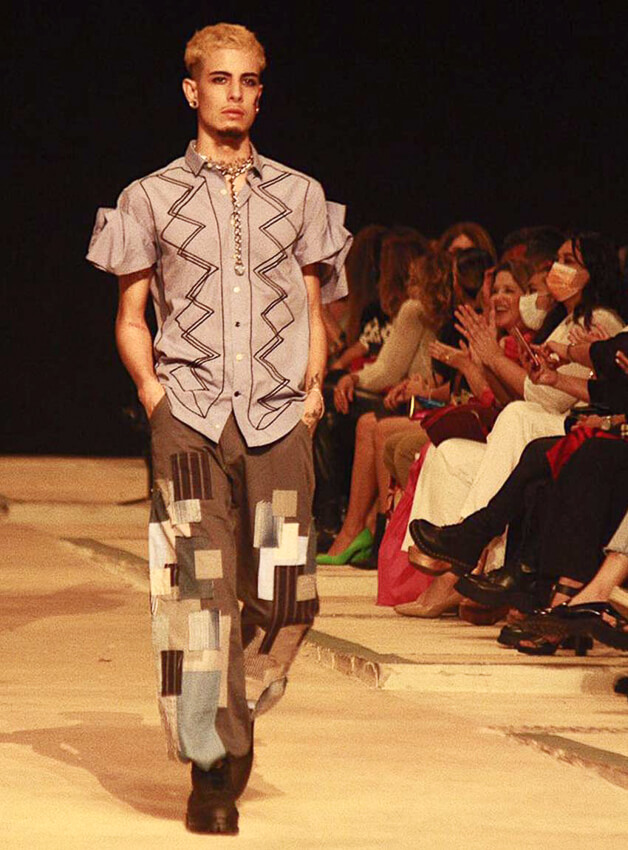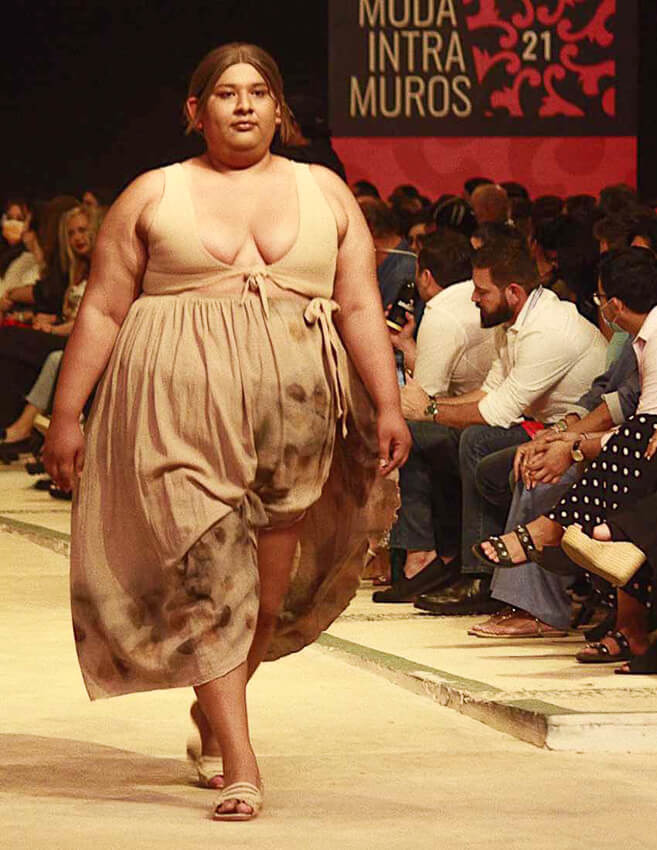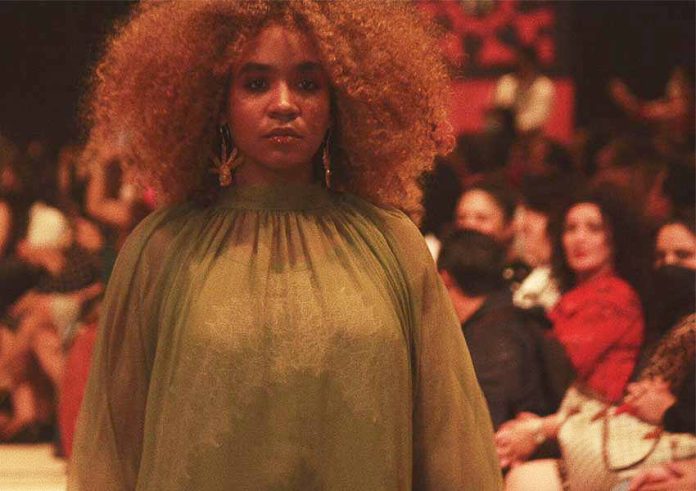While at first glance it may seem that there is little place in haute couture for sustainability and social inclusion, the fifth annual Moda Intramuros (Fashion Within City Walls) show in Campeche aimed to prove that there can be plenty of room for such ideals — with some commitment from those in the fashion industry.
The fashion show, which features the longest catwalk in Mexico, returned to the city on Friday after a pandemic hiatus in 2020, taking place for safety’s sake this year in the Concha Acustica auditorium in the city’s historic San Roman neighborhood.
Featuring eight designers — national and international — as well as 108 models and more than 60 support staff, the event showcased a breathtaking selection of pieces, ranging from the grungy denim of the House of Aguilar collection to the contrasting neon yellow and ethereal blue body of work by clothing designer Yeshua Herrera.
It also featured a surprising cohort of models displaying these collections on the catwalk: the youth of Campeche.
The show, organized annually by the Campeche nonprofit organization Patronato de la Ciudad Campeche, also cements the city as one of the surprising new hotspots in Mexico for contemporary fashion. Moda Intramuros organizer Anielka García Villajuana proudly noted that the event attracts top designers from across the country as well as internationally.

“Moda Intramuros has become part of the fashion circuits of the country, which was our intention at the inception of the project a few years ago, to establish a unique catwalk event that could show off the very best of Campeche and what it has to offer,” she said.
Patronato de la Ciudad Campeche, founded in 1993 to promote the city of Campeche as a UNESCO World Heritage Site, initially created the fashion show event six years ago as part of that mission to promote the city’s profile; but it soon became obvious to organizers that the event could never simply be about fashion.
“In the early days, we knew we were missing something,” García said. “Fashion is perceived as superficial and elitist, so we wanted to try to make it as sustainable as possible — both in terms of the materials and methods being used to create the clothing and in terms of our ability to build this event at the nexus of social inclusion, healthy community and, obviously, memorable design.”
With that goal in mind, García and her team this year did not hire models but instead trained local young people from Campeche’s barrios to walk their runway. In previous years, they had put out open calls for models, but this year, for months prior to the event, the team worked in Campeche’s poorer neighborhoods, recruiting youth to participate, giving workshops on poise and confidence and generating other possibilities for Campeche youth to be involved.
Running the workshops was a formative part of the growth of the event — both for the models and for the event organizers. As the youth of Campeche gathered and told their stories in preparation for the show — and sometimes shared their battles with mental health and other issues — it became clear that these young people had no spaces in which to express themselves.
“It’s so much more than simply a fashion event,” García said. “The vast array of people involved are the beating heart of this annual showcase. It’s a manifestation of the talent and creativity that the youth of Campeche has when it is given a chance to flourish.”

Around the fulcrum of a fashion project, the workshops have offered participants a space for sustainable, cultural and artistic work as well as the foundations of a growing supportive community of friendships and connections.
And, to the credit of all involved, the organizers and participants’ efforts have paid off: as the models took their turns parading down the catwalk, there was a notable yes-we-can confidence in the raised chests, the swaying shoulders and the professional, unidirectional model’s gaze into the middle distance.
You could have been fooled into thinking that these were the same remote creatures familiar from fashion runways lauded in the international media — had the occasional slip of the fashionista mask into a toothy grin not let the audience know that these were real flesh and blood citizens of Campeche and that they were having a good time.
Linear runways notwithstanding, the vision for the show has always been multidirectional, and at no point was this more striking than in the entire cohort’s final runway parade. Seen altogether, it was obvious that, in spite of — or perhaps because of — their diversity, there was a cohesion in this group; more than the synchronized stepping to the beat of the music, there was a sense of the knowledge that Moda Intramuros was offering an opportunity for inclusion.
“This project is about doing,” said García. “It’s about acting, about engaging, about a certain kind of activism that says we can generate the kind of Campeche we want to create for the good of all.”
As García well knows, a city’s heritage is not simply parceled up in the brick and mortar of its beautiful historic walls; it lives and grows within its people. Moda Intramuros is a rare and shining gem that brings Campeche’s heritage into the present, clothes it in cutting-edge designs and makes it ready for the future.
Shannon Collins is an environment correspondent at Ninth Wave Global, an environmental organization and think tank. She writes from Campeche.
